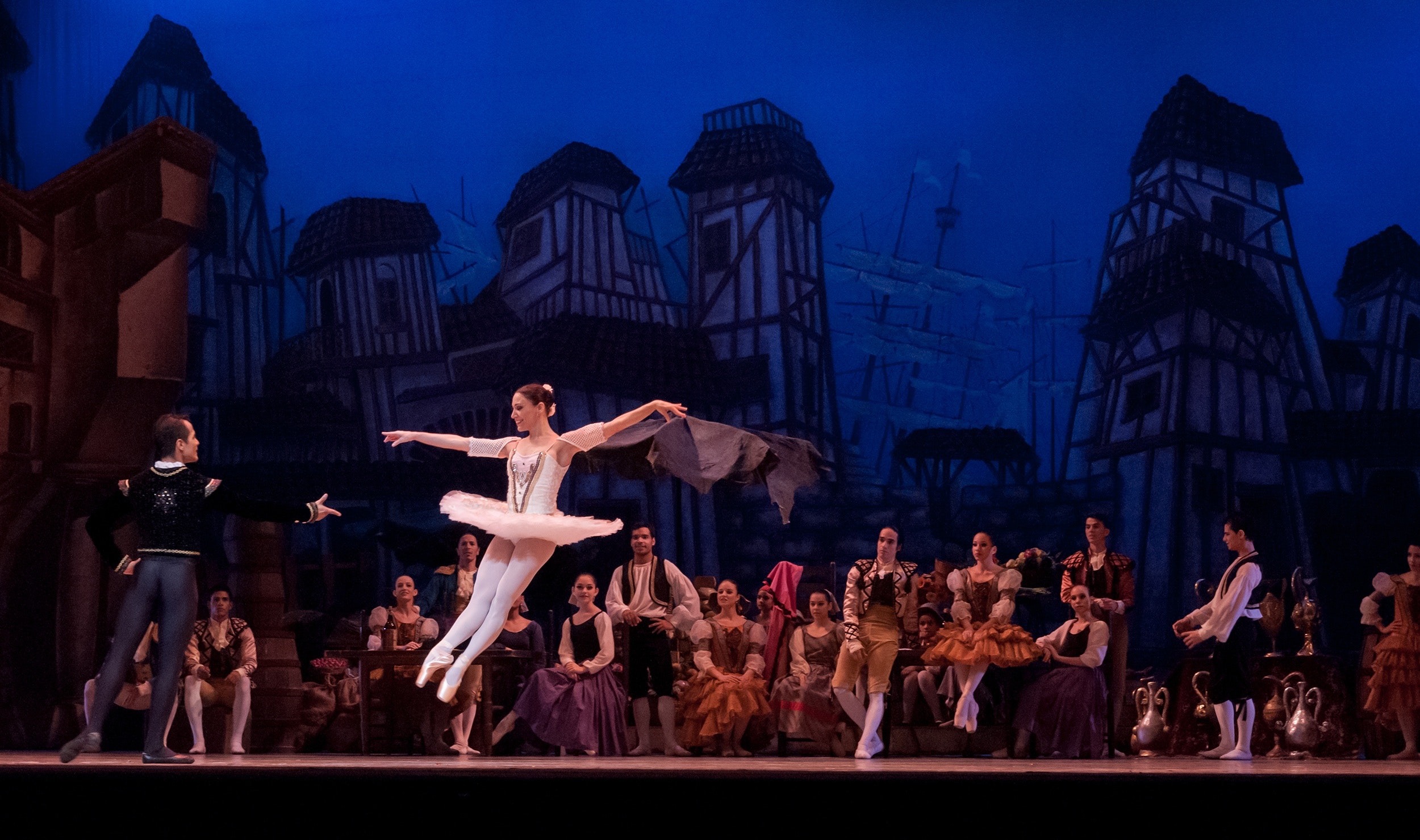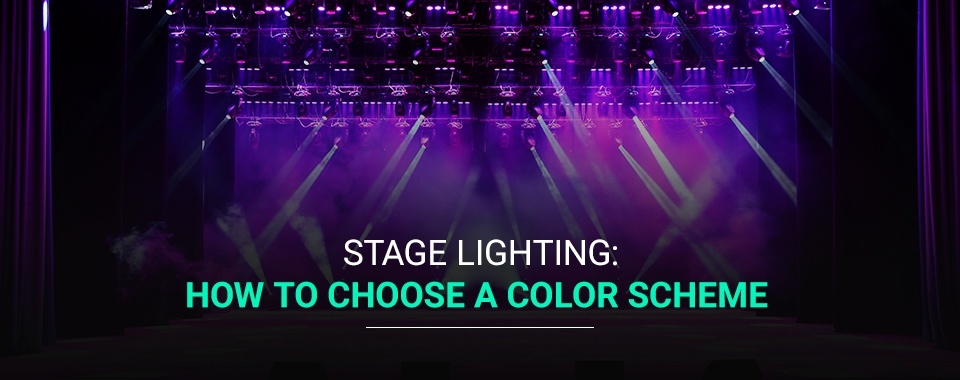

We live in a colorful world. From brighter display screens on our smartphones to the eye-grabbing HDR experience on new OLED televisions, we enjoy more color saturation and intensity than ever before. Just take a look at a news broadcast these days and pay attention to how much visual input is competing for your attention. From weather maps in bright reds announcing dangerous weather and wildfires to news anchor backdrops in shades of blue to give viewers a feeling of authenticity and trust, there’s nothing left to chance in the professional use of color schemes.
Of course, the same applies to the colors of stage lighting. The only difference is that in live performances — from theatrical venues to houses of worship — lighting designers must be careful to choose stage lighting color schemes that don’t lead to confusion or cause color fatigue in their audiences’ eyes. When illuminating live performances, subtlety still goes a long way. That’s why it’s important to always remember that the use of color in stage lighting should complement the actors’ skin tone, costumes, set paint treatments, and anything else you want the audience to focus on, as well as help accentuate the action being performances.
To help both solidify and unify your audience’s response to a performance, it’s always a good idea to first carefully consider some of the most universal and accepted responses to basic color choices. While the following definitions aren’t fixed, they’re widely considered some of the more popular emotional responses to these particular colors:
In addition to individual colors and their associated meanings, it’s highly useful to understand how they occur on the color wheel and how to use them in select pairings or more complex color schemes. However, as already stated in our color fatigue warning, unless you’re trying to create a circus-like atmosphere, the use of too many colors can result in overstimulation. Here are some handy tips for pairing colors to effectively set the scene and mood for your audience:
Just as mixing paint colors on a canvas requires abiding by a certain set of “rules,” so does mixing colors of light. Lighting designers must know what colors they initially start with, as well as how they can create other colors to implement interesting stage lighting color schemes. Some of the most prominent color rules include:
Whether from taking an art class in school or practicing your own hobbies, you’re probably familiar with primary colors, which are the baseline options you can mix to create all other colors. The primary colors of pigments such as paints and inks are red, blue and yellow. In lighting, however, the primary colors are red, blue and green (RGB).
Just as mixing the primary colors of pigments gives you green, purple and orange, combining the primary colors of light allows for unique combinations to shine:
The various methods of creating color combinations with lights use these color mixing principles, along with the science of how light reflects color to our eyes to make fascinating displays.
Objects reflect different wavelengths of light, which gives them different colors. Color exists on a spectrum from ultraviolet, which has the shortest wavelengths, to infrared, which has the longest wavelengths. At an atomic level, objects absorb certain energies and reflect others. The energies of the reflected wavelengths translate to the colors we see every day.
Black objects absorb all visible light, while white objects reflect it. Various color combination techniques use this information to create different color options.

Mixing any combination of the three primary colors is called the additive color theory. In additive mixing, you project two different-colored light sources, such as colored LEDs or white lights with primary-colored gels, on top of each other. The white screen reflects the light back to your eyes as a mixture of those two colors.
By varying the intensity of either of the two lights you use, you can create a single color that falls more toward one primary color or the other. In this way, you can mix lights to create a full spectrum of colors. You can also use white or amber light to produce even more combinations.
For example, if you wanted to create cyan from additive mixing, you would shine a blue light and a green light on top of one another. By using more blue light, the cyan would look more like pure blue, while using more green light would tinge the cyan toward pure green.
Subtractive color theory involves adding colored filters to white light. This method allows you to create new colors with one light source. White light comprises an equal combination of all three primary colors of light. By filtering out certain wavelengths, you can extract these colors from the white light.
The filters in CMY lighting are the secondary colors of the lighting color wheel — cyan, magenta and yellow (CMY). Subtractive mixing is most common in non-LED lights, which usually use a white light source.
If you wanted to create cyan from subtractive mixing, you would place a cyan filter over a white light source. Cyan, as red’s complement, would cancel out any red light, leaving only blue and green light, which together make cyan.
If you wanted to produce a primary color using subtractive mixing, you would use multiple filters. For example, a cyan filter would block out the red light, and an additional magenta filter would block out its complementary color, which is green. The result will be pure blue light, which is the only color left.
The color you get from the additive or subtractive color theories is largely based on the hue or saturation of the lights or filters you’re working with.
Hues represent the longest wavelengths of light or an object, so you see them as distinct colors. Purely saturated hues are spectral colors that contain a single wavelength pertaining to the visible spectrum.
In light, spectral hues are red, yellow, green, cyan and blue. However, not all hues can be represented by a single wavelength. Pure magenta, which is not a spectral color, is created by an equal mix of pure red and blue light.
The achromatic spectrum represents colors with no hue, which range from white to gray to black. You can create achromatic colors when mixing complementary colors together or when combining triads, which are colors that form a triangle on the color wheel. For example, a combination of yellow, cyan and magenta will block out all light and produce black, while an equal mix of red, green and blue will create white light.
Saturation is the amount of white light present in a certain hue. Highly saturated colors contain little to no white light and appear brighter and purer, while colors with low saturation appear softer and closer to gray. When you mix colors, you decrease the saturation of each distinct hue.
For instance, shining a pure red light gives you a highly saturated red hue. If you were to add greater amounts of white light, the red would become less saturated and change to pink, but it would still be a hue of red. You can change the saturation of a color without changing its brightness.
A spectral hue of only one wavelength is fully saturated. The exception is magenta, which isn’t a spectral color and doesn’t exist in a single wavelength. Magenta requires two equal wavelengths of red and blue light to be fully saturated.
Color temperature, measured in degrees Kelvin, is a method of describing a light’s appearance and determining its heat. A color’s temperature corresponds to the approximate temperature needed to heat a black metal object until it becomes that color. Black metal becomes lighter the hotter it gets, so colors with more white light have a higher color temperature.
Lower color temperatures appear in the red color range, while higher color temperatures appear in the blue color range. Ironically, colors ranging toward high temperatures appear more cold and clinical, while colors ranging toward lower temperatures appear warmer.
Your use of color temperature can elicit various emotional responses in your audience. Creating a color scheme for stage lighting that includes gradual or distinct shifts in color temperature can help you create mood shifts during performances.
Traditional lighting systems include white lights you can place colored gels in front of to change the light’s color. The gels are transparent filters made from gel or, more recently, plastic.
You can use colored gels in both additive and subtractive color mixing, although they’re more commonly used in the latter. For additive mixing, placing two different primary-colored gels over two white lights produces primary-colored lights, which you can layer to create secondary colors. For subtractive mixing, placing one or two secondary-colored gels in front of a single white light will filter out some colors and reflect others.
As a full-service audio, visual and lighting (AVL) company, Illuminated Integration has the experience and expertise to help you select the right color scheme for your performance space. We’re proud to put our years of design-build AVL experience to work for you.
Let us help you see the full potential of a permanently installed lighting system that matches your expectations and budget. Fill out our contact form today!
